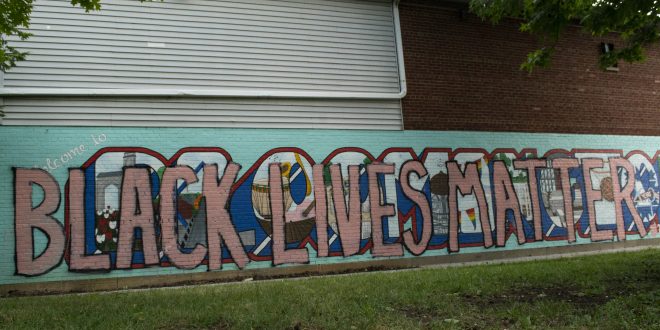Podcast: Play in new window | Download (Duration: 12:23 — 11.4MB)
The mural in People’s Park was anonymously overlaid with the words, “Black Lives Matter” on Friday, June 19, 2020.
The City of Bloomington Arts Commission Met on July 8th, during a public meeting to decide whether or not it will keep the “Black Lives Matter” lettering.
“Defund BPD” was spray-painted in the upper right corner of the mural, but the message has since been painted over. Bloomington Police Department said this an act of vandalism and they are investigating the matter. However, Bloomington Councilman Jim Sims said no opposition has been raised from the community, artist, or property owners.

Meanwhile, the city said it planned to commission a new mural later this summer. Designs for the new mural are yet to be announced.
During the public Arts Commission meeting Assistant Director for the Arts Sean Starowitz said there are no plans for covering the lettering so close to the commission of a new mural. Art Commission member Nick Blanford mentioned that a mural, especially at its current location, can have more purpose than aesthetic imagery.
In December of 1968, the current People’s Park site was the scene of a hate crime.
Only a few months earlier, in fall of 1968 the site opened as a local business called the Black Market, which sold books, clothing, records, artwork and other crafts made by Black artists. The shop was owned by a man named Clarence “Rollo” Turner. According to the Indiana University archives, Turner was an IU graduate student and wanted to create a gathering space and cultural center uniquely for people of color. He was the co-founder of the Afro-Afro-American Student’s Association or the AAASA.
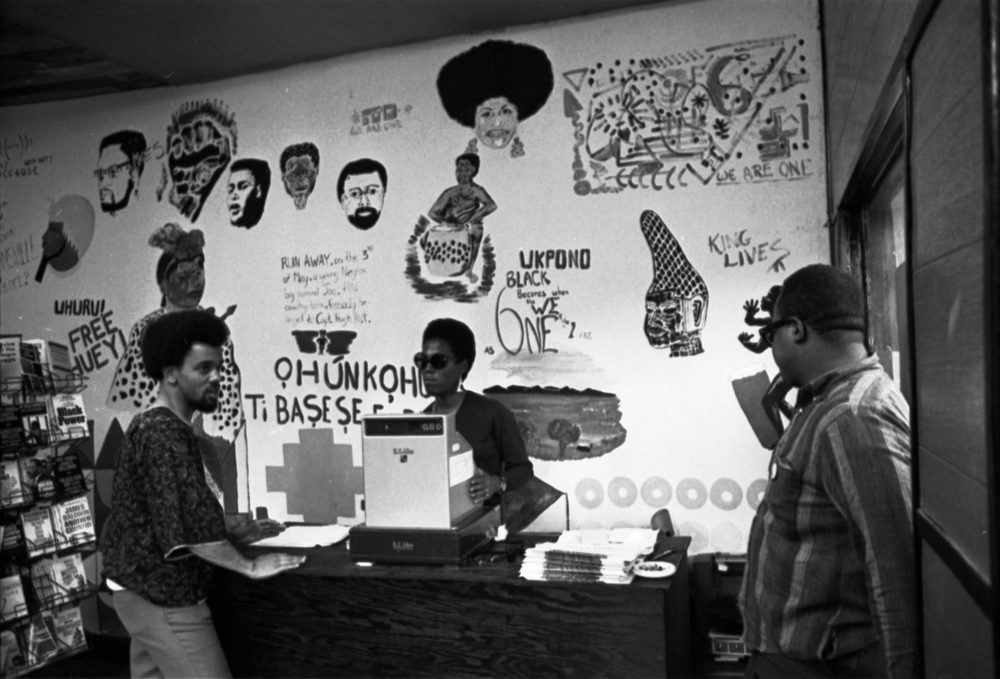
Jim Sims, city councilman and previous president of the Monroe County National Association for the Advancement of Colored People or NAACP, is working with multiple local groups to designate the area with an Indiana Historical Marker. Sims spoke about what the Black Market brought to the city of Bloomington.
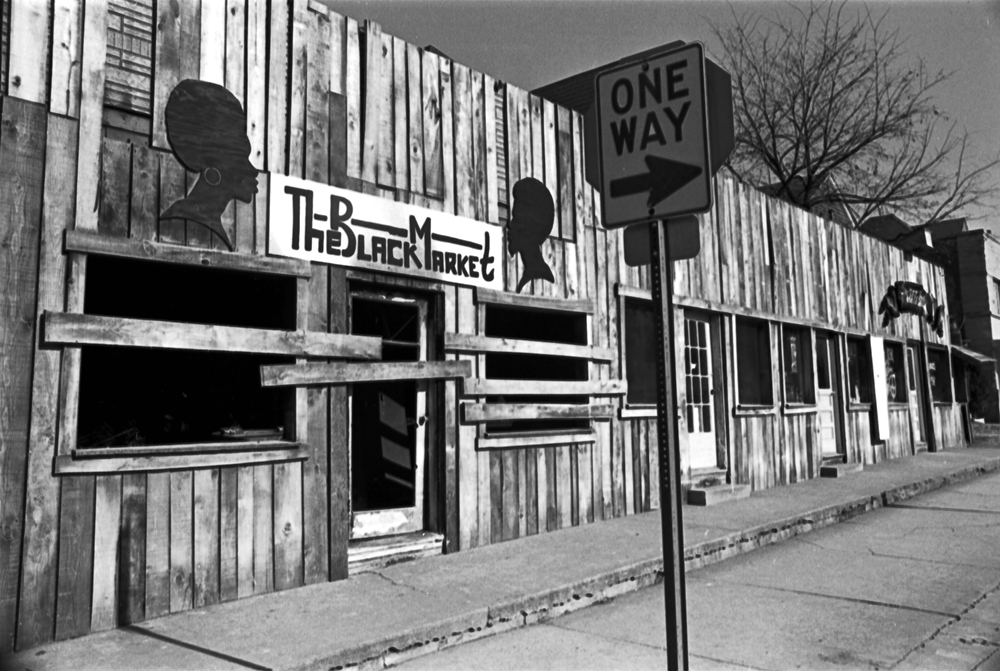
That same year, local chapters of the Ku Klux Klan were growing. In the spring of ’68 the KKK tried to establish a chapter in Monroe County Indiana, and the opening of the store stirred controversy in the community. Turner reported receiving threatening calls, and soon later Turner’s business was firebombed on December 26th, 1968 by members of the Ku Klux Klan.
According to Indiana University Archives, “eyewitnesses reported seeing a white male throw a burning container through the window and driving away.” These men were local Klansmen Carlisle Briscoe Jr. and Jackie Kinser. The Black Market was the only targeted downtown business.
According to a Herald Times story in 2013, Carlisle Briscoe Jr. was convicted in 1986 for firebombing the Black Market. He was the son of a local police officer and was notorious for setting fires around town and was even known to throw rocks into the HT crime reporters home. The article recorded Briscoe saying “He could not find anyone competent to represent him as he wanted”, so he represented himself.
Briscoe spent 2 and a half years at the Indiana State Prison. However his conviction was overturned and was released in October of 1979. Briscoe then moved to Nebraska where he was again arrested in 2012 for possession of a firearm by a prohibited person. Upon arrest, found in his home were several weapons, a large amount of ammunition, bullet proof vest, nazi propaganda and memorabilia. While in prison at the Nebraska State Penitentiary, at age 71, Briscoe died one year into his 3 year sentence.
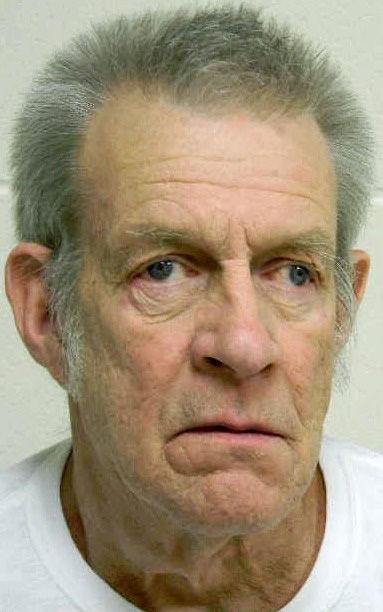
Back in 1968, two weeks after the firebombing of the Black Market, there was a student-led demonstration of at least 200 people outside the burnt remains of the Black Market.
According to state archives, Rollo Turner said, “the only reason this store was bombed was because it was a black store.”
According to state archives, in February of 1970, members of the Youth International Party, nicknamed Yippies, came up with the idea to create a people’s park on the vacant lot where the Black Market was firebombed.
People’s parks were starting to sprout at the time, modeling after People’s Park in Berkeley, California. These parks were normally not sanctioned by government or legal authority. Instead, activists gathered in a common place to “promote free speech, activism and community involvement.”
Local yippies started on the project by the spring of 1970. State archives said the park was intended to be a gathering space, community garden and a place for everyone to “sing, dance, rap and generally ‘do his own thing.”
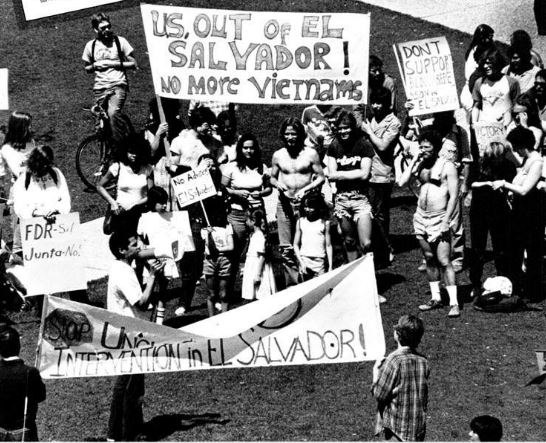
There were some complications with bypassing city authority to put up the park. State archives say the City of Bloomington threatened to shut it down due to “public health concerns.” The property owner, Larry Canada, reportedly had plans for the property. However, he deeded the land to the city in 1976. Since then, the Bloomington People’s Park has been the site of protests, music festivals and flea markets.
Today the park lives on, with a mural entitled “You Belong Here”, designed by local artist Eva Rohlfing Allen, on the side of what is now Bicycle Garage Inc.
However, in the midst of current events – recharging the civil rights movement – the words “Black Lives Matter” were painted over the mural. But, being on the Bicycle Garage Inc.’s wall, Starowitz said the future mural is ultimately up to them. Starowitz mentioned there have been concerns of making a statement with a mural celebrating black culture, but not working towards reforming equity issues. He said the Arts Commission is actively working to create a more inclusive and diverse environment for artists. Councilman Jim Sims said the painted addition compliments the historical importance of the area.
In the meantime, the Bloomington City arts commission will work with the property owners and the community to commission an appropriate mural for People’s Park. Starowitz mentioned mural themes that have been suggested by the community to commemorate the History of Bloomington’s People of Color.
According to their current contract for the existing “You Belong Here” mural, the Bloomington Arts Commission could begin repainting the mural on August 31st, 2020. Starowitz said the new mural contract could last anywhere from a 3 to 5 year period.
 WFHB Bloomington Community Radio
WFHB Bloomington Community Radio
